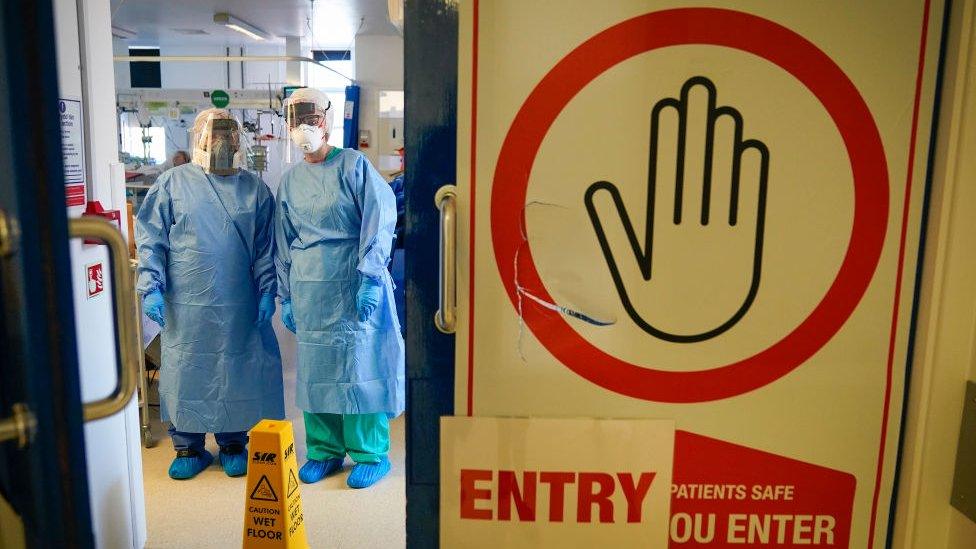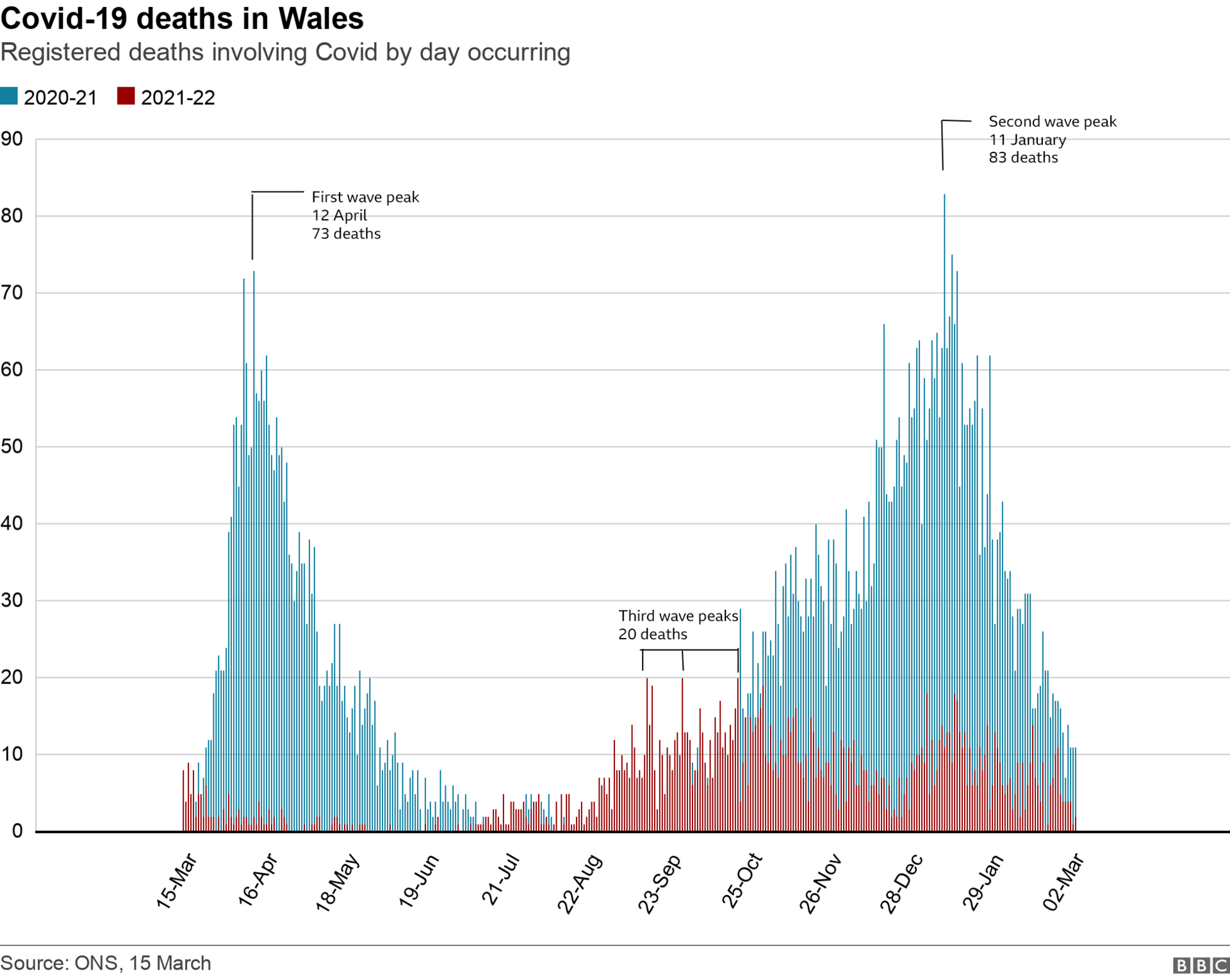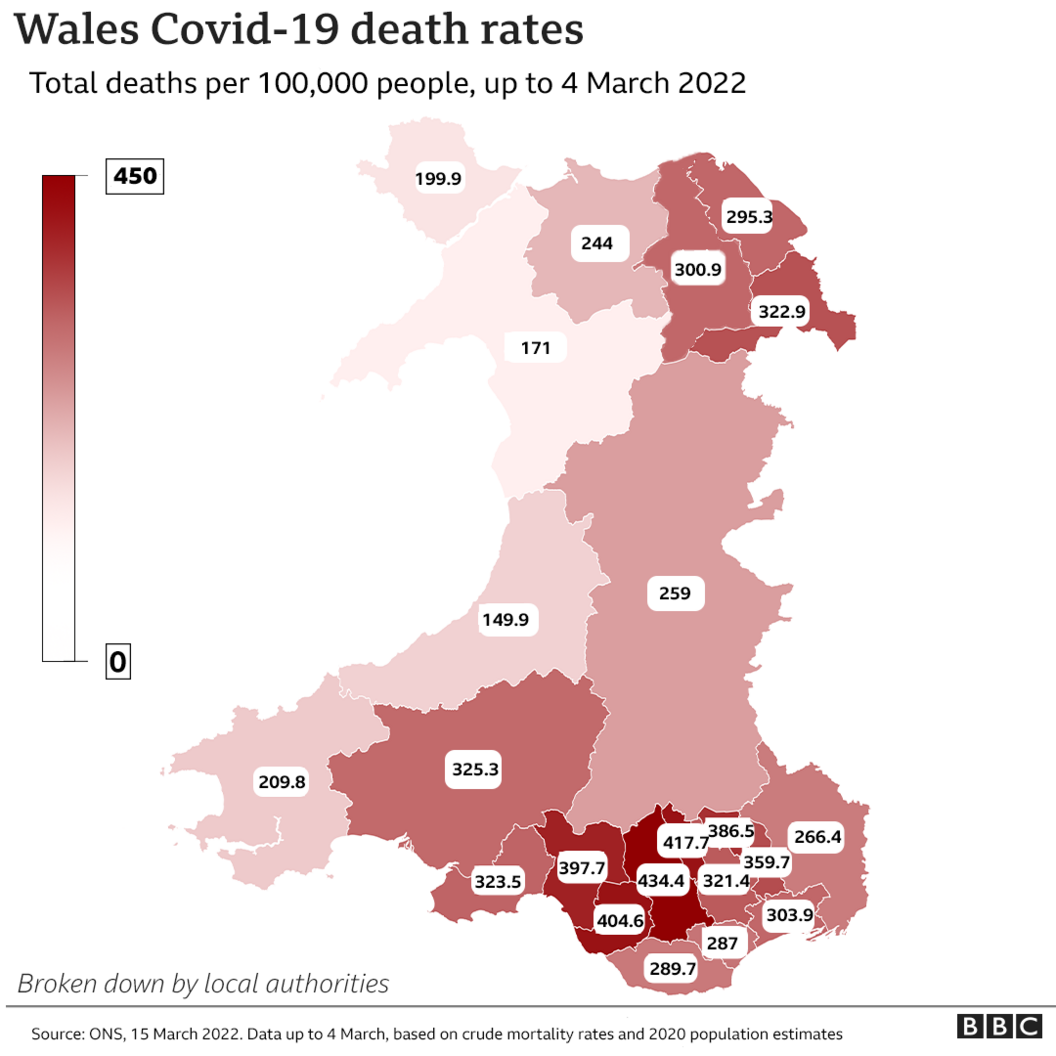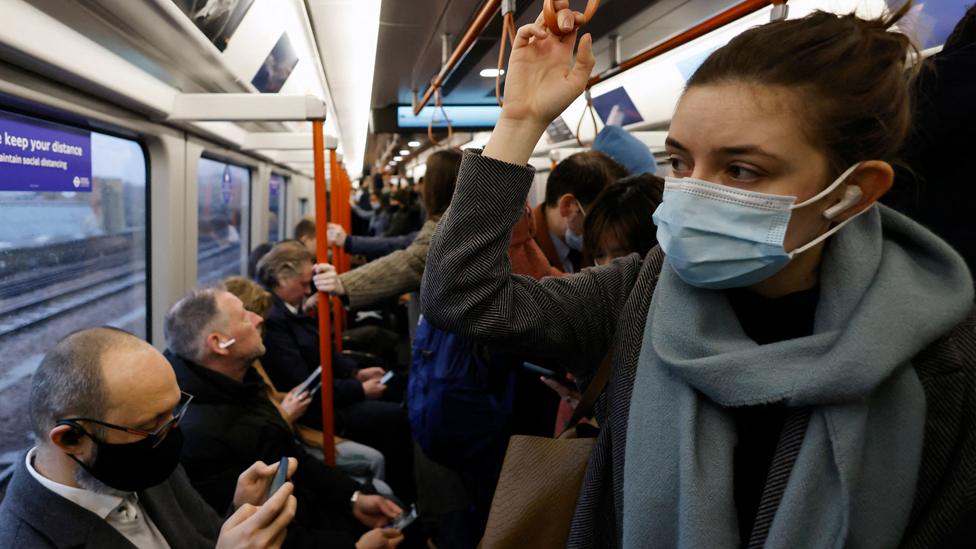Covid in Wales: Two years since first death
- Published

Critical care numbers of Covid patients have stayed relatively low in the third wave
A further 48 people in Wales have had a death which involved Covid-19, according to the Office for National Statistics (ONS).
The weekly figures marked two years since the first Covid death occurred in Wales.
Deaths have been within a similar range for the last month but deaths involving Covid were more than three times higher in the same week in 2021.
The total number of deaths involving Covid has now reached 9,775.
There were no deaths involving Covid in three counties in the latest week: Flintshire, Pembrokeshire and Wrexham.
Deaths from all causes were 9% above normal levels in the latest week.
In the two years since the pandemic began, there have been 6,100 additional deaths from all causes than we might expect to see on average.

How the pandemic unfolded - and changed
The first positive case of Covid-19 was detected in a hospital patient in Swansea in late February 2020, who had caught it in Italy.
The first death involving Covid occurred on 15 March 2020 in a 68-year-old patient at Wrexham Maelor hospital.
Another patient, aged 96, died the next day at Morriston Hospital in Swansea. Both had underlying health conditions.
Two more deaths followed in Blaenau Gwent and Caerphilly, with the Aneurin Bevan health board area soon becoming the early hotspot for the virus in Wales.
The following week brought more than 20 deaths and two weeks later it had quickly multiplied to 300 deaths, in a sudden spike.
This peaked on 12 April with 73 daily deaths
In all, the first wave of the pandemic brought about 2,500 deaths, when Covid was mentioned as a factor on the death certificate.
The summer of 2020 brought some respite but as cases took off again in September, and a more sustained and deadly second wave followed over the winter.
Covid would be the leading cause of death for four months.
It peaked at 83 deaths on 11 January 2021, the worst single day for deaths in the pandemic in Wales.
The third wave, initially with the more infectious Delta variant, began in late summer. But thanks to the vaccine programme kicking in, the impact on hospitals would prove to be less severe.
Although the Omicron variant saw cases in the community rampant over the Christmas period, the winter has proved to be less serious than the preceding one in terms of serious illness and mortality.

Most patients in hospital testing positive for Covid have been treated for other conditions and numbers in critical care have been kept comparatively low.
This has resulted in less pronounced heights to this undulating wave, with peaks reaching 20 deaths a day in September and October.
By the end of February, 98% of adults were estimated to have some sort of antibody protection from either the vaccine or immunity following infection.
There were a total of 710 deaths in the three months to the end of February. This compared to 3,723 in the same period in the previous winter.

A care home in the Aneurin Bevan health board area, where 14 residents died in April 2020, out of more than 300 care home deaths involving Covid that month across Wales
Older age groups and poorer areas impacted
The pandemic has hit the older and more vulnerable age groups.
Around 72% of deaths involving Covid have been in those aged 75 or over, while there have been 1,866 deaths involving Covid in care homes.

Those living in the traditionally poorer areas of Wales, where underlying health conditions and socio-economic factors are more prevalent, have seen higher mortality rates.
Rhondda Cynon Taf has one of the worst Covid mortality rates in the UK, with Merthyr Tydfil and Bridgend are also in the top 20 highest death rates across England and Wales.
The Covid mortality rate is almost twice as high for those living in the most deprived areas of Wales, compared to those in the least deprived, according to ONS figures.
Related topics
- Published28 May 2024

- Published26 February 2022

- Published11 March 2022
